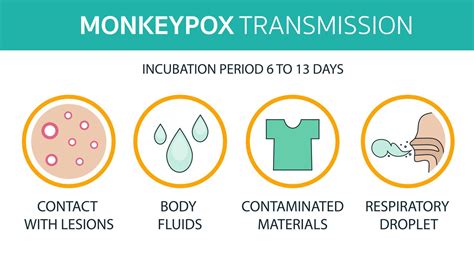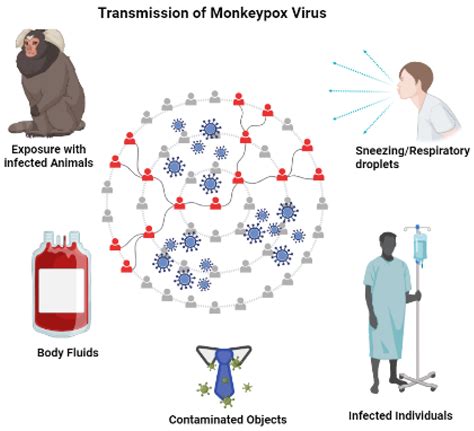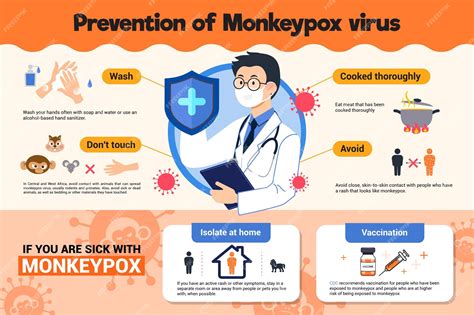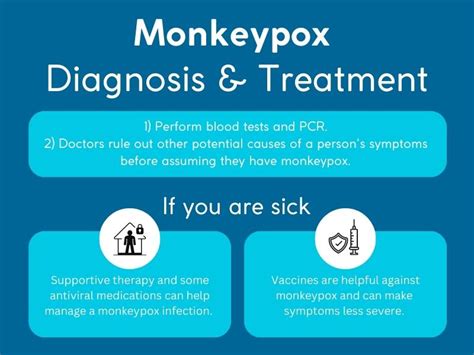Intro
Learn about Monkeypox transmission, symptoms, and prevention in our comprehensive guide, covering virus spread, infection control, and outbreak response to protect against this zoonotic disease and its potential health risks.
The recent outbreak of monkeypox has raised concerns globally, with many individuals seeking information on how the disease is transmitted and how they can protect themselves. Understanding the transmission dynamics of monkeypox is crucial for preventing its spread and mitigating its impact on public health. In this article, we will delve into the details of monkeypox transmission, discussing the various routes through which the virus can spread, the factors that increase the risk of transmission, and the measures that can be taken to prevent infection.
As a zoonotic disease, meaning it can be transmitted from animals to humans, monkeypox poses a unique challenge in terms of prevention and control. The virus can spread through direct contact with infected animals, such as rodents, or through indirect contact with contaminated materials. Human-to-human transmission of monkeypox is also possible, although it is less common. The virus can spread through respiratory droplets, contact with infected bodily fluids, or by touching contaminated surfaces.
The importance of understanding monkeypox transmission cannot be overstated, given the potential for the disease to cause severe illness and even death. By grasping the mechanisms of transmission, individuals can take informed steps to reduce their risk of infection, and public health officials can develop effective strategies for controlling outbreaks. Moreover, as global travel and trade continue to increase, the risk of monkeypox spreading across borders and into new regions also rises, making international cooperation and awareness crucial in the fight against this disease.
Introduction to Monkeypox

Monkeypox Virus Characteristics
The monkeypox virus is a large, complex virus with a double-stranded DNA genome. It is closely related to the variola virus, which causes smallpox, and the cowpox virus. The virus has two main strains: the West African strain, which is less virulent, and the Congo Basin strain, which is more severe. The virus can infect a wide range of animals, including rodents, primates, and other mammals.Transmission Routes of Monkeypox

- Direct Contact: Touching or handling infected animals, such as rodents or primates, can transmit the virus to humans. This is the primary route of transmission in endemic areas.
- Indirect Contact: Contact with contaminated materials, such as bedding, clothing, or utensils, that have come into contact with an infected animal's bodily fluids, can also transmit the virus.
- Respiratory Droplets: Human-to-human transmission of monkeypox can occur through respiratory droplets, such as those produced by coughing or sneezing. This route is less common but can occur in close-contact settings, such as households or healthcare facilities.
- Contaminated Surfaces: Touching surfaces contaminated with the virus can also lead to transmission. This route is particularly relevant in healthcare settings, where proper infection control practices are crucial.
Risk Factors for Monkeypox Transmission
Several factors can increase the risk of monkeypox transmission, including:- Age: Children and young adults are more susceptible to infection due to their developing immune systems.
- Occupation: Individuals who work with animals, such as veterinarians, laboratory workers, or hunters, are at higher risk of transmission.
- Travel History: Traveling to endemic areas or regions with ongoing outbreaks increases the risk of exposure.
- Immune Status: Individuals with compromised immune systems, such as those with HIV/AIDS or undergoing chemotherapy, are more susceptible to severe illness.
Prevention and Control Measures

- Vaccination: Vaccines against monkeypox are available, although they are not widely used due to the relatively low risk of transmission. Vaccination is recommended for individuals at high risk, such as laboratory workers or those traveling to endemic areas.
- Personal Protective Equipment (PPE): Wearing PPE, such as masks, gloves, and gowns, can reduce the risk of transmission in healthcare settings or when handling infected animals.
- Infection Control Practices: Implementing proper infection control practices, such as hand hygiene, surface cleaning, and sterilization, can reduce the risk of transmission in healthcare facilities.
- Animal Control: Controlling the population of infected animals, such as rodents, can reduce the risk of transmission in endemic areas.
Global Response to Monkeypox Outbreaks
The global response to monkeypox outbreaks involves a coordinated effort between public health officials, healthcare providers, and individuals. Some key components of the global response include:- Surveillance: Monitoring for cases of monkeypox and tracking the spread of the disease is crucial for identifying outbreaks and implementing control measures.
- Contact Tracing: Identifying and monitoring individuals who have come into contact with infected persons can help prevent further transmission.
- International Cooperation: Sharing information, coordinating response efforts, and providing technical assistance between countries can help control outbreaks and prevent the spread of the disease.
Monkeypox Diagnosis and Treatment

- Clinical Evaluation: Healthcare providers evaluate patients for symptoms, such as fever, rash, and swollen lymph nodes, to determine if they are at risk for monkeypox.
- Laboratory Testing: Laboratory tests, such as PCR or serology, can confirm the diagnosis of monkeypox.
- Supportive Care: Patients with monkeypox receive supportive care, including fluids, pain management, and wound care, to manage symptoms and prevent complications.
Monkeypox Vaccine and Treatment Options
Several vaccine and treatment options are available for monkeypox, including:- Smallpox Vaccine: The smallpox vaccine, which is also effective against monkeypox, is recommended for individuals at high risk of transmission.
- Antiviral Medications: Antiviral medications, such as brincidofovir, may be used to treat monkeypox in severe cases or in individuals with compromised immune systems.
Public Awareness and Education

- Risk Communication: Clear and timely communication of the risks associated with monkeypox can help individuals take informed steps to protect themselves.
- Prevention Messages: Disseminating prevention messages, such as the importance of hand hygiene and avoiding contact with infected animals, can reduce the risk of transmission.
- Community Engagement: Engaging with local communities, particularly in endemic areas, can help build trust and promote adherence to prevention and control measures.
Monkeypox Research and Development
Ongoing research and development are essential for improving our understanding of monkeypox and developing effective prevention and control strategies. Some key areas of research include:- Vaccine Development: Developing new and improved vaccines against monkeypox can enhance protection against the disease.
- Diagnostic Tools: Improving diagnostic tools, such as rapid diagnostic tests, can facilitate timely diagnosis and treatment.
- Therapeutic Options: Developing effective therapeutic options, such as antiviral medications, can improve treatment outcomes for individuals with monkeypox.
What is monkeypox, and how is it transmitted?
+Monkeypox is a viral disease caused by the monkeypox virus, which can be transmitted through direct contact with infected animals, indirect contact with contaminated materials, respiratory droplets, or contaminated surfaces.
What are the symptoms of monkeypox, and how is it diagnosed?
+The symptoms of monkeypox include fever, rash, and swollen lymph nodes. Diagnosis involves a combination of clinical evaluation, laboratory testing, and epidemiological investigation.
How can I protect myself from monkeypox, and what are the prevention measures?
+To protect yourself from monkeypox, practice good hygiene, avoid contact with infected animals, and follow prevention measures such as vaccination, wearing personal protective equipment, and implementing infection control practices.
As we continue to navigate the complexities of monkeypox transmission, it is essential to remain informed and take proactive steps to protect ourselves and our communities. By understanding the transmission dynamics, prevention measures, and treatment options, we can work together to control outbreaks and mitigate the impact of this disease. If you have any questions or concerns about monkeypox, we encourage you to share your thoughts and engage in the conversation. Let's work together to build a safer and healthier world for everyone.
